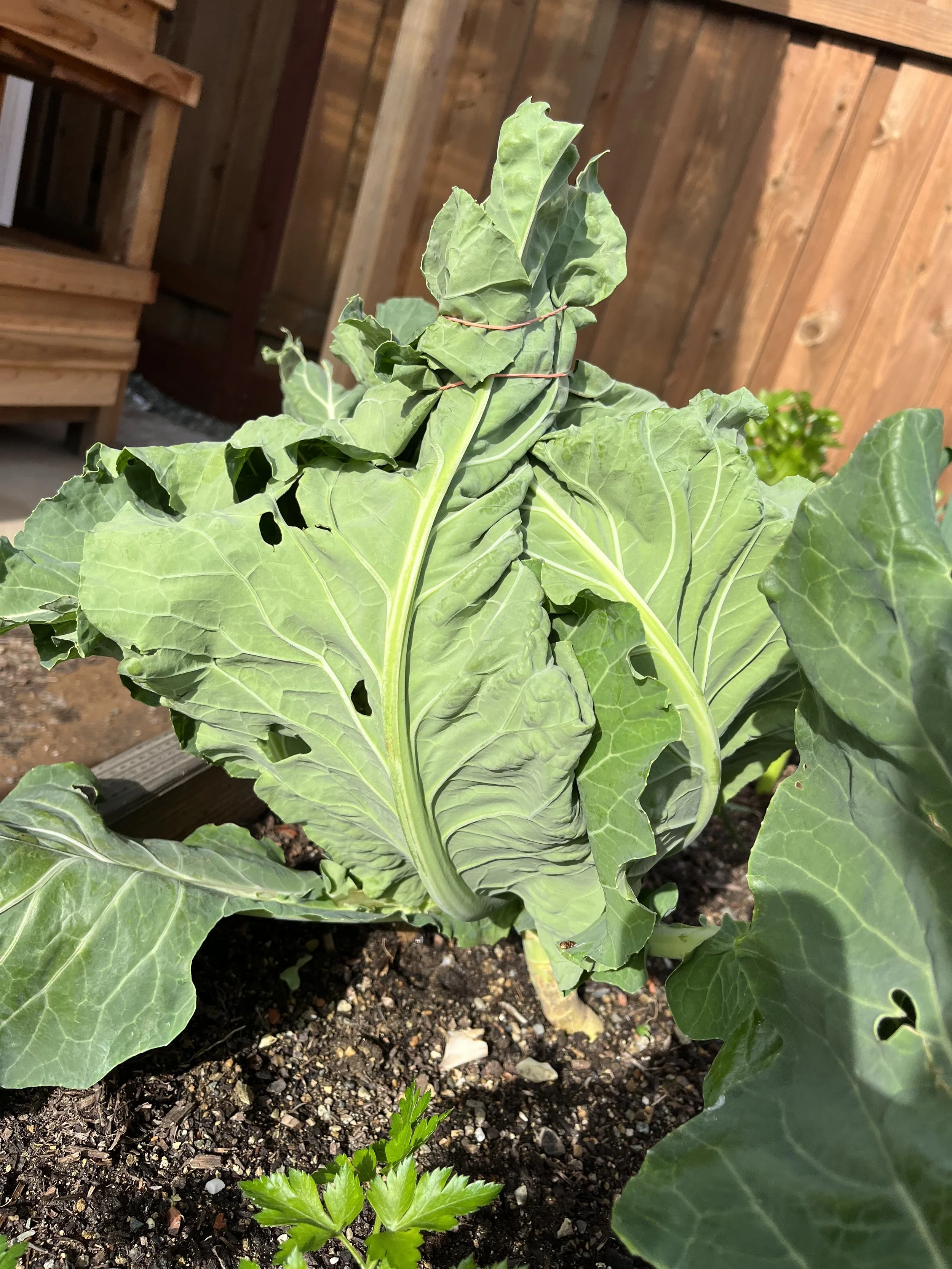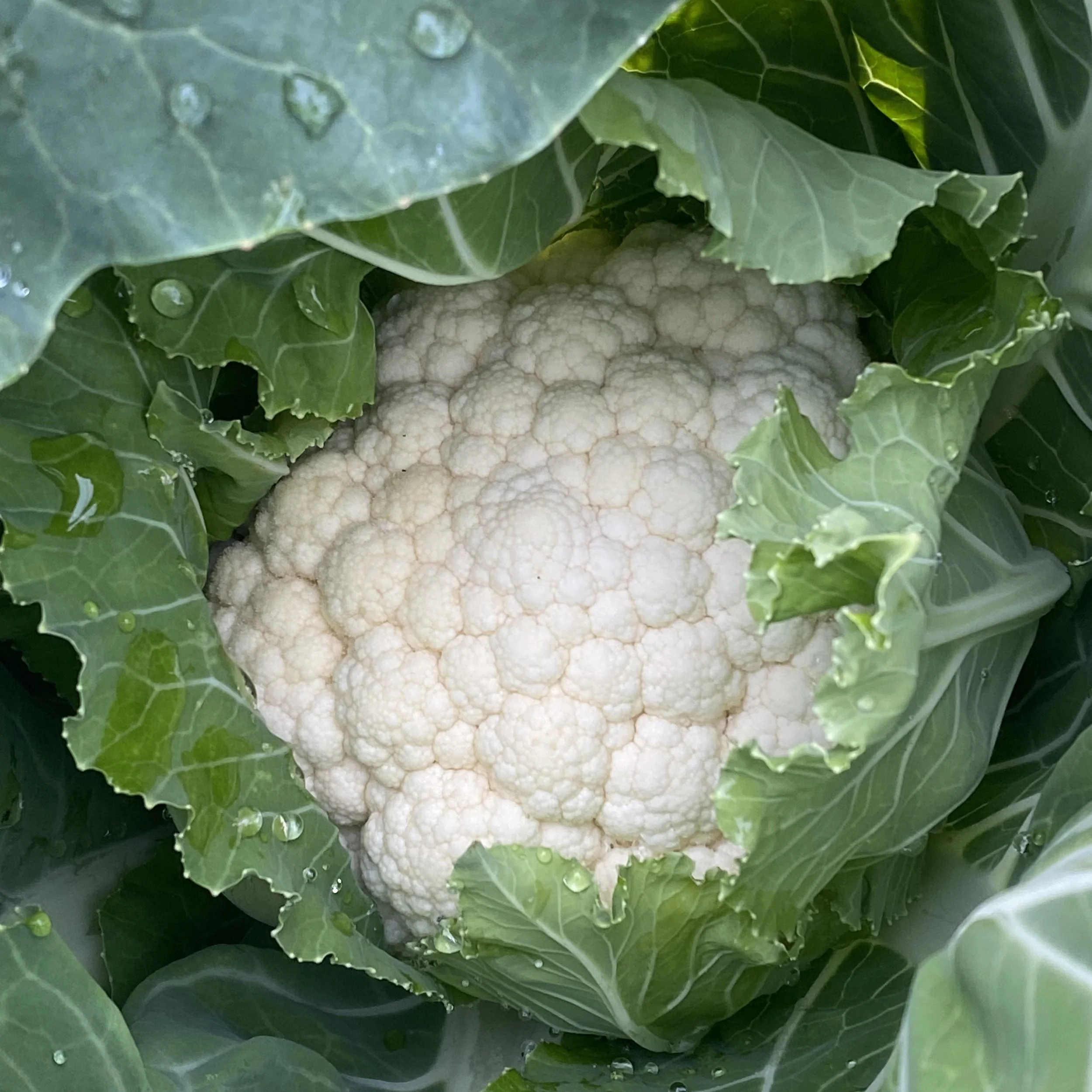Blanching Your Cauliflower: From Your Yard to Your Fork
/It's a common occurrence: you come out to the garden to check on your nice, burgeoning cauliflower heads, and notice that the tops are starting to turn a slightly yellow shade. Is it a disease? A mold? Frost damage? None of the above: this kind of discoloration on cauliflower is caused by excessive sun exposure.
Whether your cauliflower suffers from sun discoloration depends on several factors, such as variety (the pale varieties are usually most affected), its exposure to the sun's path at its brightest and hottest time of day, nearby plants that may or may not be shading it, etc. Although sun discoloration doesn't physically affect the bloom structure of the head, it can make for a more bitter, less appetizing flavor. That's why it's worth considering a practice called "blanching."
Blanching is the simple method of bending up a few of the lower leaves and tying them around the cauliflower head, which effectively produces a protective sun shade. The leaves should be large enough to surround and fully cover the cauliflower head, and can then be tied together, either at the tips or around the middle, so that the head develops in full shade. Use a soft line to tie them to prevent the leaves from being damaged, such as cotton twine or a strip from an old t-shirt; attaching the tips with a clothespin can also work well. It's important to tie the leaves loosely, to allow the head to grow to its full width (usually 6-10 inches, depending on variety), as well as to allow some air flow to prevent moisture build-up. The undersides of the tied leaves will still photosynthesize and shouldn't stunt or affect the normal growth of the plant.
So, you have effectively blanched your cauliflower head, and you're ready to harvest and freeze it for future use. This is where culinary "blanching" comes in, and it is well worth the effort!
Many of us are familiar with the cooking technique called blanching, which is the act of scalding a vegetable in boiling water or steam for a short time, followed by a quick yet thorough cooling in very cold or ice water. There are several reasons to blanch your cauliflower before freezing. Blanching protects its flavor, texture and color from the natural process of internal enzymes breaking down cell structures. Blanching also slows the loss of vitamins, brightens its color, and rids the surface of dirt and microorganisms.
Blanching times depend on the vegetable, and it is important to be mindful of it as under or over-blanching result in loss of quality. 3 minutes is ideal for cauliflower, and make sure the water is in a rolling boil before submerging. After the third minute mark, remove and immediately submerge in cold water, 60 degrees or less. Actively replace the cold water as the heat from the cauliflower increases the water temperature, either from a running water source or using ice cubes. After 3 minutes of cooling, drain the head/s thoroughly before freezing, as excess water can cause minor damage when it freezes.
And there you have it! If you want to ensure beautiful and tasty cauliflower heads from garden to kitchen, consider both types of blanching this season!






